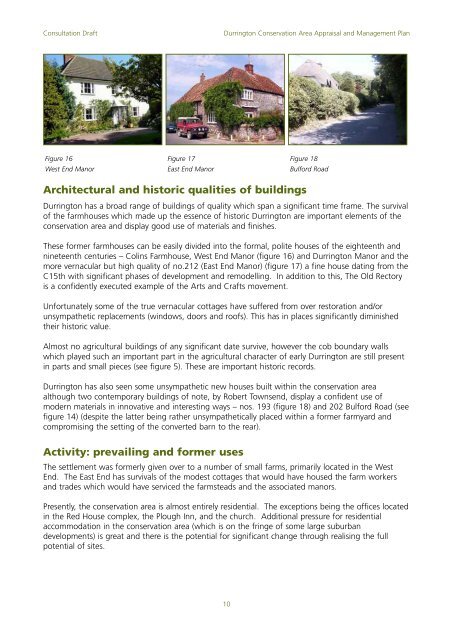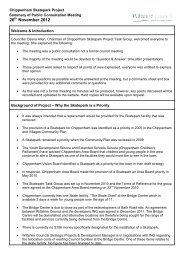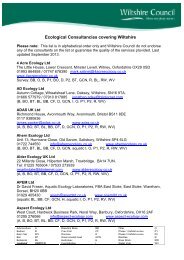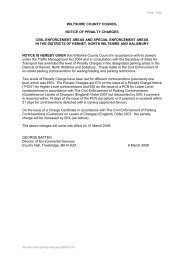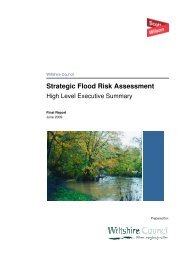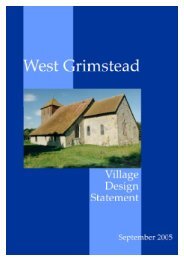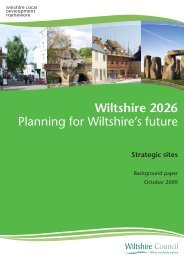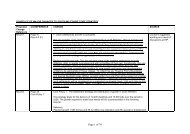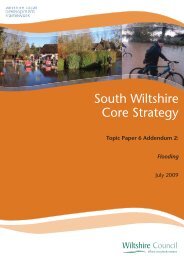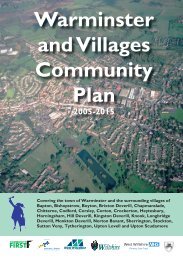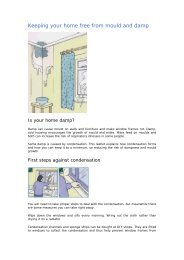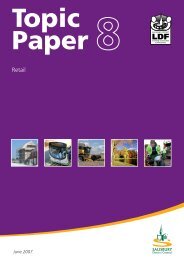Durrington CAA_doc.qxp - Wiltshire Council
Durrington CAA_doc.qxp - Wiltshire Council
Durrington CAA_doc.qxp - Wiltshire Council
- No tags were found...
You also want an ePaper? Increase the reach of your titles
YUMPU automatically turns print PDFs into web optimized ePapers that Google loves.
Consultation Draft<strong>Durrington</strong> Conservation Area Appraisal and Management PlanFigure 16West End ManorFigure 17East End ManorFigure 18Bulford RoadArchitectural and historic qualities of buildings<strong>Durrington</strong> has a broad range of buildings of quality which span a significant time frame. The survivalof the farmhouses which made up the essence of historic <strong>Durrington</strong> are important elements of theconservation area and display good use of materials and finishes.These former farmhouses can be easily divided into the formal, polite houses of the eighteenth andnineteenth centuries – Colins Farmhouse, West End Manor (figure 16) and <strong>Durrington</strong> Manor and themore vernacular but high quality of no.212 (East End Manor) (figure 17) a fine house dating from theC15th with significant phases of development and remodelling. In addition to this, The Old Rectoryis a confidently executed example of the Arts and Crafts movement.Unfortunately some of the true vernacular cottages have suffered from over restoration and/orunsympathetic replacements (windows, doors and roofs). This has in places significantly diminishedtheir historic value.Almost no agricultural buildings of any significant date survive, however the cob boundary wallswhich played such an important part in the agricultural character of early <strong>Durrington</strong> are still presentin parts and small pieces (see figure 5). These are important historic records.<strong>Durrington</strong> has also seen some unsympathetic new houses built within the conservation areaalthough two contemporary buildings of note, by Robert Townsend, display a confident use ofmodern materials in innovative and interesting ways – nos. 193 (figure 18) and 202 Bulford Road (seefigure 14) (despite the latter being rather unsympathetically placed within a former farmyard andcompromising the setting of the converted barn to the rear).Activity: prevailing and former usesThe settlement was formerly given over to a number of small farms, primarily located in the WestEnd. The East End has survivals of the modest cottages that would have housed the farm workersand trades which would have serviced the farmsteads and the associated manors.Presently, the conservation area is almost entirely residential. The exceptions being the offices locatedin the Red House complex, the Plough Inn, and the church. Additional pressure for residentialaccommodation in the conservation area (which is on the fringe of some large suburbandevelopments) is great and there is the potential for significant change through realising the fullpotential of sites.10


